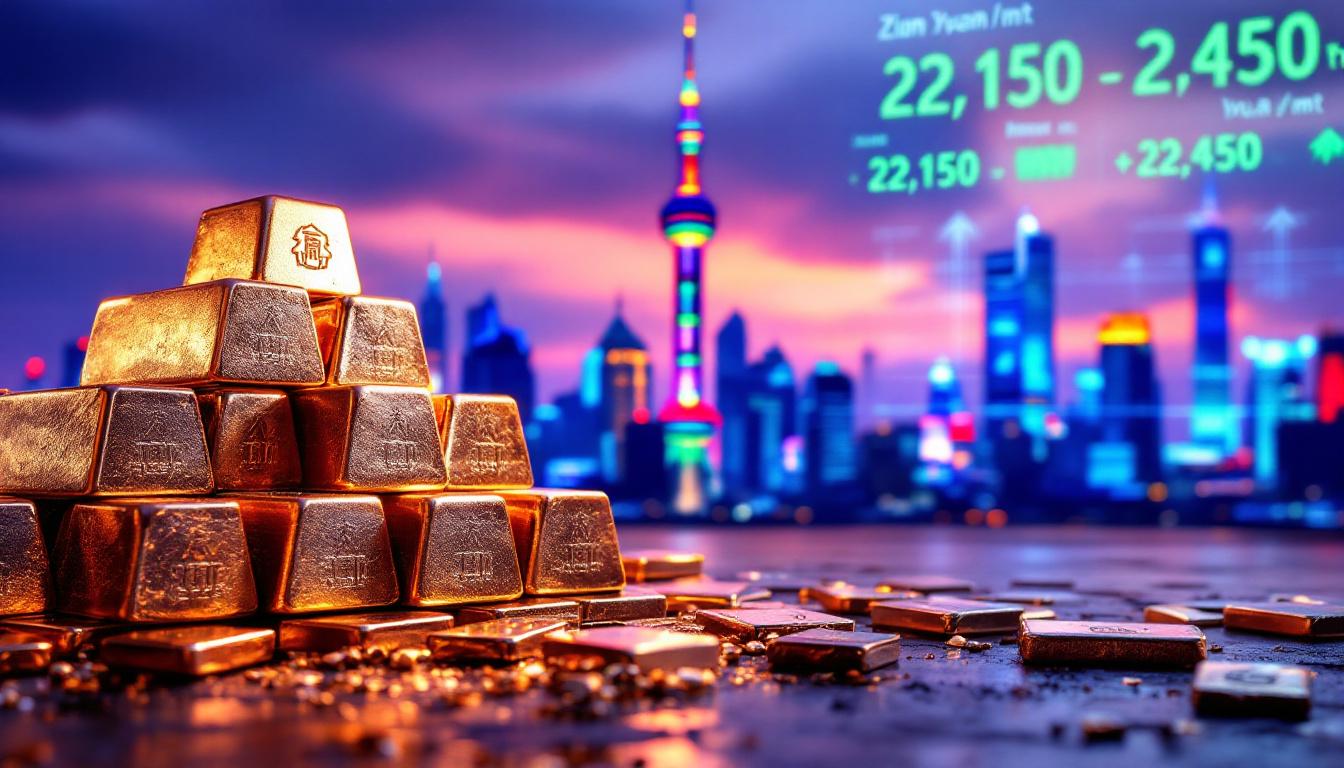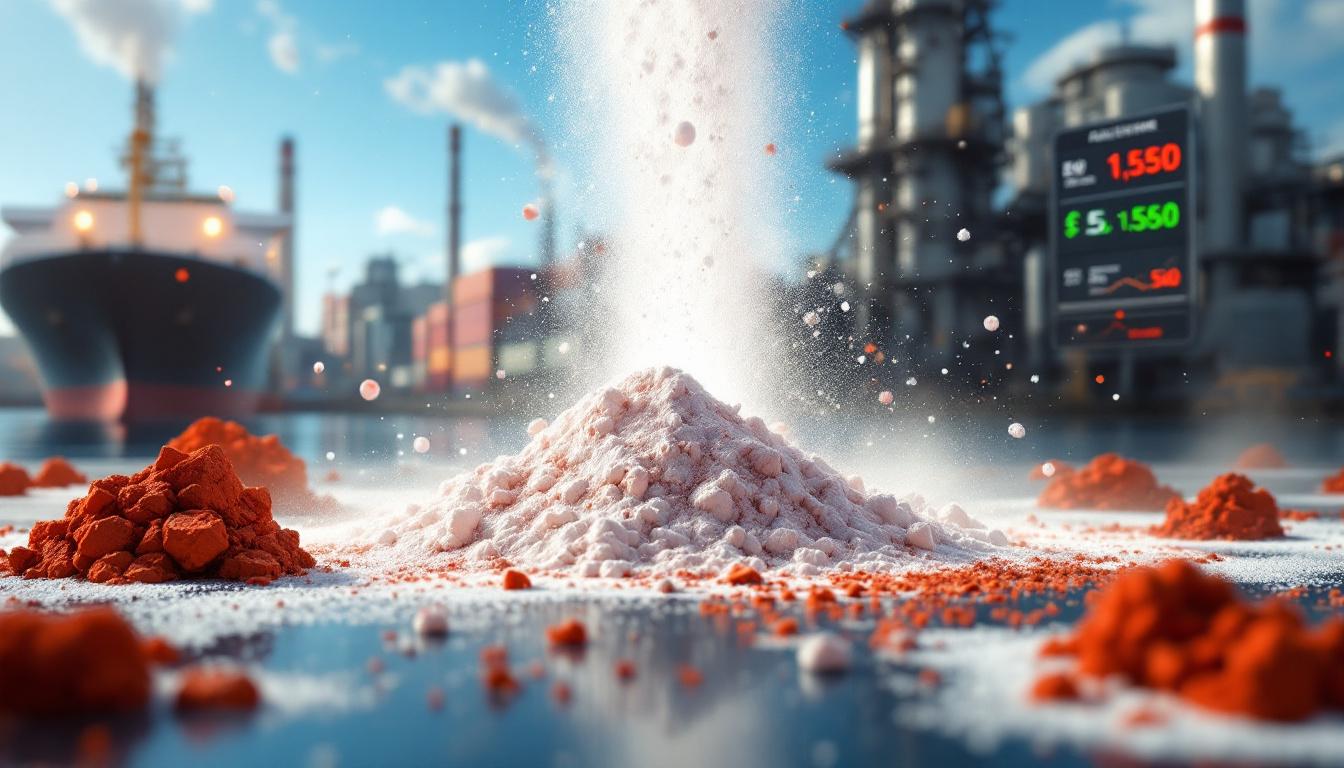Shanghai Zinc Market: Price Trends and Trading Dynamics
The Shanghai zinc market is experiencing significant shifts in trading patterns as downstream buyers adjust their strategies in response to recent price movements. With spot prices reaching key psychological thresholds, market participants are showing renewed interest, leading to improved transaction volumes and more active trading sessions in China's largest metals exchange. Understanding these patterns requires consideration of global China demand trends and their impact on metals markets.
Current Price Ranges and Market Positioning
In the latest trading sessions, zinc prices have established clear ranges based on quality grades and brand reputation. Premium 0# zinc is trading primarily between 22,220-22,420 yuan/mt, while the sought-after Shuangyan zinc commands a higher position at 22,260-22,450 yuan/mt. Meanwhile, 1# zinc occupies the lower tier, trading mainly between 22,150-22,350 yuan/mt.
These price bands reflect a nuanced market where quality differentiation plays a crucial role in determining value. Traders and downstream buyers alike are navigating these ranges with strategic precision, creating opportunities for both short-term and position traders.
Premium Structure Analysis
The Shanghai zinc market operates with a sophisticated premium structure that reveals much about market sentiment and participant behavior. Morning session premiums typically range between 50-80 yuan/mt against the SMM average price, providing a stable reference point for early trades.
As trading progresses to the second session, premium structures shift to futures-based references with notable differentiation:
- Domestic zinc: 160-170 yuan/mt against the 2508 contract
- Honglu-v: 140 yuan/mt against the 2508 contract
- Huize: 110 yuan/mt against the 2507 contract
- Shuangyan (high-end): 180-220 yuan/mt against the 2508 contract
This premium hierarchy illustrates how brand reputation directly translates into pricing power, with Shuangyan commanding premiums up to twice those of lower-tier brands against the same futures contract.
"Premium differentiation has become increasingly important as downstream buyers become more selective about quality and delivery timing," notes the SMM analysis. "The spread between premium and standard brands has widened significantly in recent sessions."
Why Are Downstream Buyers Entering the Market Now?
The recent uptick in downstream buying activity stems from a convergence of market conditions creating a perceived value opportunity. Several key factors have aligned to trigger increased purchasing at current price levels, similar to patterns seen in other metals with volatile market volatility strategies becoming increasingly important.
Price Psychology and Buying Triggers
Market psychology plays a crucial role in zinc trading, with certain price thresholds acting as psychological barriers or triggers. The current market has reached what SMM describes as "the psychological price level of some downstream buyers," creating a natural entry point for those who had been waiting on the sidelines.
This psychological trigger combines with tangible market movements to create buying motivation:
- Shanghai average prices showing relatively high increases
- Futures market experiencing month-on-month declines
- The price gap between spot and futures creating arbitrage opportunities
These conditions have created a situation where downstream industries perceive current prices as offering good value relative to expected future pricing, encouraging procurement activities that had been previously postponed.
Market Response Patterns
The market's response to these conditions has been swift and decisive. According to SMM market analysts, "spot pricing activities increased, traders actively sold their goods, and overall spot transactions improved." This improved liquidity creates a virtuous cycle, as increased trading volume tends to stabilize prices and encourage further market participation.
Particularly notable is the shift in transaction patterns:
- Higher volume trades at the 22,200-22,400 yuan/mt price level
- Increased spot market transactions versus futures-referenced deals
- More active morning sessions with SMM average-based premiums
These patterns suggest a market reaching equilibrium after a period of uncertainty, with both buyers and sellers finding acceptable price levels for transactions.
How Are Different Market Participants Responding?
The current market dynamics have prompted distinctive strategies from various market participants, each positioning themselves to maximize advantage in the evolving price environment.
Trader Strategies
Zinc traders have adopted increasingly nimble approaches to inventory management and pricing. With downstream buying activity improving, traders are displaying:
- More aggressive selling postures to capitalize on improved liquidity
- Active quotation in both trading sessions to maximize sales opportunities
- Strategic positioning against both SMM average and futures prices
This tactical flexibility allows traders to optimize inventory turnover while still capturing reasonable premiums. The willingness to offer material against different price references indicates confidence in current market levels rather than expectations of significant near-term price appreciation.
Buyer Behavior Analysis
Downstream buyers, primarily from galvanizing, die-casting, and brass manufacturing sectors, have demonstrated increased price sensitivity coupled with strategic purchasing patterns:
- Opportunistic buying when prices approach the 22,200 yuan/mt level
- Preference for premium brands (Shuangyan) when building strategic inventory
- Tactical use of standard grades (1# zinc) for immediate production needs
This segmented approach allows buyers to balance quality considerations against cost management, particularly important as manufacturing margins remain under pressure in many downstream sectors.
Premium Differentiation by Brand Quality
The market has established a clear premium hierarchy based on brand quality and reputation. Shuangyan zinc, recognized for its high purity and consistency, commands the highest premiums at 180-220 yuan/mt against the 2508 contract. This represents a significant premium of approximately 0.8-1.0% over the base price.
In contrast, standard domestic zinc trades at premiums of 160-170 yuan/mt, while Huize material commands only 110 yuan/mt against the nearer 2507 contract. This tiered pricing structure reflects:
- Quality differences impacting downstream production efficiency
- Brand reputation and consistency of supply
- Delivery timing preferences and logistical considerations
For buyers producing high-precision components or corrosion-resistant galvanized products, the premium paid for top-tier zinc typically translates into lower overall production costs through reduced waste and higher-quality finished goods.
What Technical Factors Are Influencing the Market?
Beyond the fundamental supply-demand dynamics, several technical factors are shaping trading patterns and price movements in the Shanghai zinc market.
Price Support and Resistance Levels
Technical analysis suggests that the current price band has established important support and resistance levels:
- Support emerging around 22,150-22,200 yuan/mt, coinciding with increased buying interest
- Resistance forming near 22,450 yuan/mt, where selling pressure increases
- The 22,300 yuan/mt level acting as a pivot point for directional movement
These technical levels align with the psychological thresholds identified in buyer behavior, creating natural points where transaction volume tends to increase. The convergence of technical indicators with actual trading patterns provides stronger validation of these levels as significant market inflection points.
Trading Volume Patterns
Volume analysis reveals changing patterns in market participation:
- Improved transaction volumes following price adjustments to current levels
- Higher volume in morning sessions when premiums reference the SMM average
- Concentration of premium brand transactions in afternoon sessions
These volume patterns indicate a market finding equilibrium after a period of adjustment. The shift from futures-referenced pricing to SMM average-based transactions in morning sessions suggests traders and buyers seeking stability in pricing references rather than the volatility sometimes associated with futures markets.
The different premium structures between morning and afternoon sessions also reveal the market's adaptation to intraday price movements and changing participation from various buyer segments.
Market Outlook: What's Next for Shanghai Zinc?
While forecasting commodity markets carries inherent uncertainty, several indicators provide insights into potential near-term developments in the Shanghai zinc market. Analysts following both zinc and iron ore forecasts note similarities in how these industrial metals respond to economic signals.
Short-Term Price Projections
The current balance between improving transaction volumes and active trader selling suggests a period of relative price stability may be emerging:
- Potential consolidation within the 22,150-22,450 yuan/mt range if current buying patterns persist
- Premium adjustments likely as market liquidity continues to improve
- Continued differentiation between premium and standard zinc grades
The premium structure against different contract months (2507 vs. 2508) indicates market expectations of stable to slightly higher prices in the coming month, with the contango structure (higher premiums for later months) suggesting no immediate supply concerns.
Disclaimer: Market projections are based on current trends and are subject to change based on numerous factors including macroeconomic developments, policy changes, and unforeseen supply disruptions.
Supply Chain Implications
The current market dynamics have several implications for the zinc supply chain:
- Downstream industries appear to be capitalizing on favorable price points to rebuild inventories that may have been depleted during previous price volatility
- The willingness of traders to actively sell suggests balanced inventory levels rather than expectations of significant supply tightness
- Premium brand producers continue to maintain pricing power, indicating quality remains a key consideration despite price sensitivity
These factors point toward a market achieving greater balance after periods of adjustment, with both supply and demand sides finding acceptable price levels for increased transaction activity.
FAQ: Shanghai Zinc Market
What factors are driving current zinc price movements?
The current zinc price movements are influenced by a combination of futures market declines (month-on-month), spot market dynamics showing relatively high increases in the Shanghai average price, and psychological price thresholds that have triggered increased buying interest from downstream industries. This convergence of factors has created favorable conditions for market participants to engage in more active trading.
How do premium structures vary between different zinc grades?
Premium structures vary significantly based on zinc quality and brand reputation. High-end brands like Shuangyan command premiums of 180-220 yuan/mt against futures contracts, reflecting their superior quality and consistency. Standard domestic zinc trades at mid-range premiums of 160-170 yuan/mt, while other brands like Honglu-v (140 yuan/mt) and Huize (110 yuan/mt) occupy lower premium tiers. These differentials directly reflect quality perception, production consistency, and downstream manufacturing impact.
Why are traders actively selling in the current market?
Traders are actively selling to capitalize on improved transaction volumes as downstream buyers enter the market at psychologically attractive price points. This selling strategy balances inventory management needs with market liquidity opportunities. Rather than indicating bearish sentiment, active selling in the context of improved transaction volumes suggests healthy market function where price discovery is occurring efficiently between willing buyers and sellers.
What is the significance of premiums against SMM average versus futures prices?
Premiums against the SMM average price provide a stable reference point less subject to intraday volatility, making them preferred for morning sessions when market direction may be less clear. Futures-based premiums offer flexibility for hedging and risk management, particularly for afternoon trading when more market information is available. The market's shift between these premium structures throughout the trading day indicates evolving risk perceptions and strategic positioning by market participants.
Additional Market Considerations
When analyzing the Shanghai zinc market, several additional factors warrant consideration beyond the immediate price dynamics and trading patterns.
Supply-Side Constraints
While the current market shows balanced trading, ongoing mining constraints continue to influence the broader zinc market:
- Environmental compliance requirements at major Chinese mining operations
- Concentrate availability fluctuations affecting smelter output
- Energy cost considerations impacting refining economics
These factors create potential upside risks to prices if demand strength continues, as the supply response may face limitations in the near term.
Industrial Demand Signals
Downstream industries provide important signals about zinc consumption patterns:
- Construction sector zinc demand for galvanizing remains a key consumption driver
- Automotive production trends influence die-casting zinc alloy requirements
- Infrastructure investment cycles affect overall galvanized steel consumption
The willingness of these sectors to enter the market at current price levels suggests confidence in near-term industrial activity, despite broader economic uncertainties. Many analysts draw parallels between zinc trends and copper price insights as both metals serve as economic indicators.
Warehouse Inventory Context
While specific inventory data requires regular updates, the relationship between visible stocks and price movements offers valuable context:
- Low warehouse inventories typically support higher premiums
- Regional inventory disparities can create arbitrage opportunities
- Inventory trends often lead price movements by several weeks
Current trader willingness to sell suggests adequate inventory availability rather than concerns about immediate scarcity. Furthermore, the gold price forecast offers additional context for understanding how precious and industrial metals markets may diverge in response to economic signals.
The Shanghai zinc market continues to demonstrate the sophisticated interplay between physical metal trading, futures market dynamics, and industrial demand patterns that characterize China's evolving commodities markets. As downstream buying improves at current price levels, market participants across the value chain are finding opportunities to optimize their positions in this essential industrial metal.
Want To Capitalise On The Next Major Mineral Discovery?
Discover how significant mineral findings can lead to substantial market returns by exploring Discovery Alert's dedicated discoveries page, where our proprietary Discovery IQ model provides real-time alerts on ASX mineral discoveries, giving you the crucial edge to position yourself ahead of the market.




